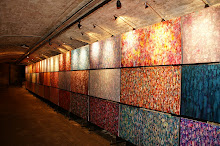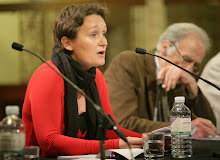On Sunday April 14 1935, after four years of drought, your family was at church. ‘Give us back our lush green land,’ you prayed, but that afternoon the worst of the black blizzards hit.
The house shook. Dust squeezed past the wet rags at the windows, filling the air. Anxiously you listened. Your father had gone into the biting blackness to settle the cattle. Finally he returned, choking, spitting up mud.
The pioneers had called your tree-less land the ‘Great American Desert’. Experts had warned the lack of crop rotation and deep ploughing would leave soil exposed to the wind. But the farmers hadn't listened.
People died from the dust, the rest began to starve. Proud, your father refused handouts, but soon he had no choice: seven failed harvests out of eight. He sold the cattle, watched them slaughtered. You packed your meagre belongings and left, not even bothering to close the door.
By 1940 2.5 million people had left, and in the next seven years another 5 million would leave, ending single-family farming in the American Great Plains.
skip to main |
skip to sidebar







According to the UNFPA the population of the world increases by 1.2% a year.
That's 235,000 a day.
That's 235,000 a day.
GENE MEME is a blog, art installation and outreach programme about world population.
The GENE MEME art installation took place in the Crypt Gallery in London from 9 June to 20 June 2010.
The GENE MEME art installation took place in the Crypt Gallery in London from 9 June to 20 June 2010.
GENE MEME was supported by a debate asking what should be done about rising population.



Links to posts
- Ancestral Pueblo culture
- Angkor
- Antioch
- Bodmin Moor
- Cahokia
- China’s Great Leap Forward
- Classical Greece
- Easter Island
- Ephesus
- Fatehpur Sikri
- GENE MEME
- Hawaii
- Hispaniola
- Holodomor
- Illinois
- Juana Maria
- Kaskaskia
- Madagascar
- Minimata
- North Korea’s ‘Arduous March’
- Pitcairn Island
- Rabbits in Australia
- Rwanda
- Smallpox
- St Kilda
- St Matthew Island
- Sugar
- The Aleuts
- The American Dustbowl
- The ancient Olmec civilisation
- The Aral Sea
- The burial of Riez
- The collapse of the Nasca
- The decline of Bruges
- The deforestation of Ethiopia
- The extinction of the Moa
- The Florida Everglades
- The Gambier trade triangle
- The great civilisation of Sumer
- The Harappan Culture
- The Irish potato famine
- the last Nicoleňo
- The last passenger pigeon
- The Mayan civilisation
- The pleistocene extinctions
- The Sahel
- The Vikings in Greenland
Search This Blog

